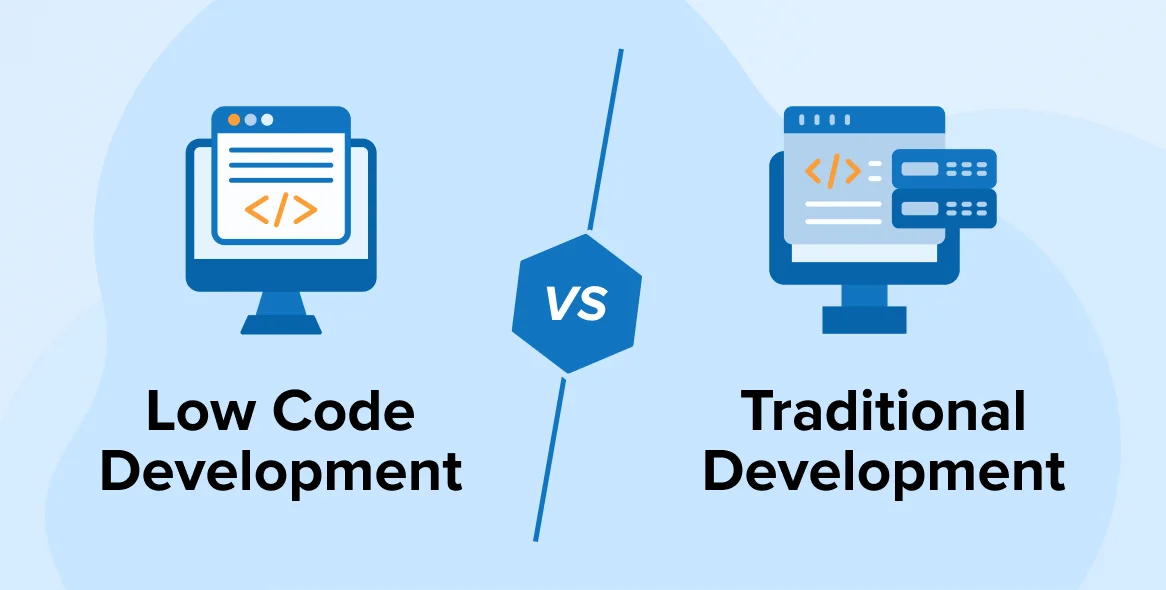Low-code development—especially with Microsoft Power Apps—has allowed organizations to approach application development in a whole new way. Unlike traditional coding methods, low code platforms like Power Apps allow users to create apps utilizing visual interfaces with little to no coding knowledge. As a result, businesses may more easily and economically optimize workflows and processes without having to incur large expenditures in technical expertise.
THE POWER OF MICROSOFT POWER APPS
Microsoft Power Apps stands out in the low code space by providing an intuitive platform with drag-and-drop functionality and pre-made themes. With this simple method, even non-programmers may create dependable custom applications fast and easily. To efficiently manage orders, inventory, and supplier data, for example, a mid-sized shop can develop an app that will save costs and time while facilitating fast reactions to changes in the market.
Businesses can save a significant amount of money, shorten the time it takes to develop new products, and maintain a competitive advantage in today’s fast-paced market by utilizing Microsoft Power Apps. In addition to being highly user-friendly, Power Apps is also quite adaptable and scalable. The platform is flexible enough to meet changing needs as companies expand and change, and it works well with other Microsoft products like Office 365, SharePoint, and Power BI.
KEY DIFFERENCES BETWEEN TRADITIONAL CODING AND LOW CODE PLATFORMS
Traditional coding requires in-depth programming knowledge, whereas low code platforms are user-friendly and accessible to non-technical users.
Comparative Analysis on Time, Cost, and Complexity:
Application development has seen a dramatic change with the advent of low-code development. When compared to conventional coding methods, it can frequently save app development time by up to 90%, which is one of its most enticing perks. Businesses can save a significant amount of money because to this time-saving advantage. Development in traditional programming can be a tedious process that needs highly skilled programmers and many hours of code. On the other hand, low code development enables participation in the app production process from those with different levels of technical skill. Low-code platforms, such as Microsoft Power Apps, simplify the entire development process and make it more accessible to a wider variety of specialists since they offer pre-built templates and user-friendly, visual interfaces.
Maximizing ROI with Low-Code Development:
Businesses implementing low-code development with Microsoft Power Apps deployment may see a major reduction in return on investment (ROI). Apps may be quickly deployed thanks to this technology, which also effectively cuts down on the time and costs associated with traditional development approaches. Enterprises may be able to introduce apps more quickly using low code platforms like Power Apps than they could with traditional coding because of how streamlined they are. This rapid implementation shortens the time to market and lowers the development costs. Additional advantages of low-code development include scalability and adaptability, which are essential in today’s hectic business climate. Low code solutions are readily scalable to satisfy new requirements as companies evolve and adjust to market expectations.
Streamlined Processes and Reduced Development Time:
One of the standout advantages of low-code development, particularly with Microsoft Power Apps, is the remarkable ability to streamline processes and significantly reduce development time. Traditional coding methods often involve lengthy and complex development cycles. In contrast, low code platforms provide a seamless and agile workflow that empowers businesses to launch applications quickly. With low-code development, the traditional barriers of extensive coding and testing phases are substantially diminished. Instead, users can take advantage of intuitive drag-and-drop functionalities and pre-built templates, enabling them to bring applications to life with unprecedented speed. This accelerated development not only optimizes time but also enables businesses to respond promptly to market demands. By minimizing the inherent complexities and bottlenecks of traditional coding, low-code development paves the way for agile and efficient app creation, ultimately enhancing an organization’s overall competitiveness.
Businesses can save a lot of money because to streamlined procedures and quicker development periods, while low-code development’s flexibility and agility help them remain adaptable to changing market conditions. Essentially, adopting Microsoft Power Apps low-code development becomes a calculated decision for businesses looking to maximize return on investment and future-proof their technological expenditures.
Cost-Effectiveness and Scalability:
The ability to drastically cut down on development time and optimize processes is one of the key benefits of low-code development, especially when utilizing Microsoft Power Apps. Customized coding techniques could entail drawn-out, intricate development cycles. On the other hand, low-code platforms offer a flexible and user-friendly process that enables companies to rapidly launch apps. The usual difficulties associated with protracted coding and testing procedures are significantly reduced with low-code development. Alternatively, pre-built templates and simple drag-and-drop functionality allow users to create apps at a never-before-seen pace. This faster development maximizes time and enables organizations to react quickly to market demands.
Enhanced Flexibility and Business Agility:
Using low-code development, particularly with Microsoft Power Apps, can improve corporate agility and flexibility. Traditional coding methods are sometimes rigid and unwilling to change. Conversely, low-code development requires flexibility. Because low-code has a modular design and an intuitive interface, businesses can quickly modify their apps to meet the needs of the market and accommodate shifting user preferences. Because of this adaptability, businesses can stay one step ahead of the competition and act fast to take advantage of new opportunities. Businesses that use low-code development equip themselves for success in an innovative and rapidly changing world. Low-code development with Microsoft Power Apps provides enhanced flexibility and business agility in today’s hectic corporate environment—two essential elements for sustained success.
Why Choose Singleclic for Your Low-Code Journey:
Specializing in Microsoft Power Apps and having a deep grasp of business processes, Singleclic is well-positioned to lead your low-code project. We provide customized solutions that meet your company’s goals and make sure you get the most out of low-code development in terms of return on investment.
Rather than just a shift in technology, adopting low code development with Microsoft Power Apps is a purposeful step toward enhanced productivity, agility, and competitive advantage. Businesses that wish to stay ahead of the digital curve should consider the many benefits of implementing this innovative approach.
To learn more about how we supply business with low-code options, please check out our page here.










One Response
An interesting discussion is worth comment. I believe that you should publish
more about this topic, it might not be a taboo matter but usually folks don’t talk about these topics.
To the next! Kind regards!!